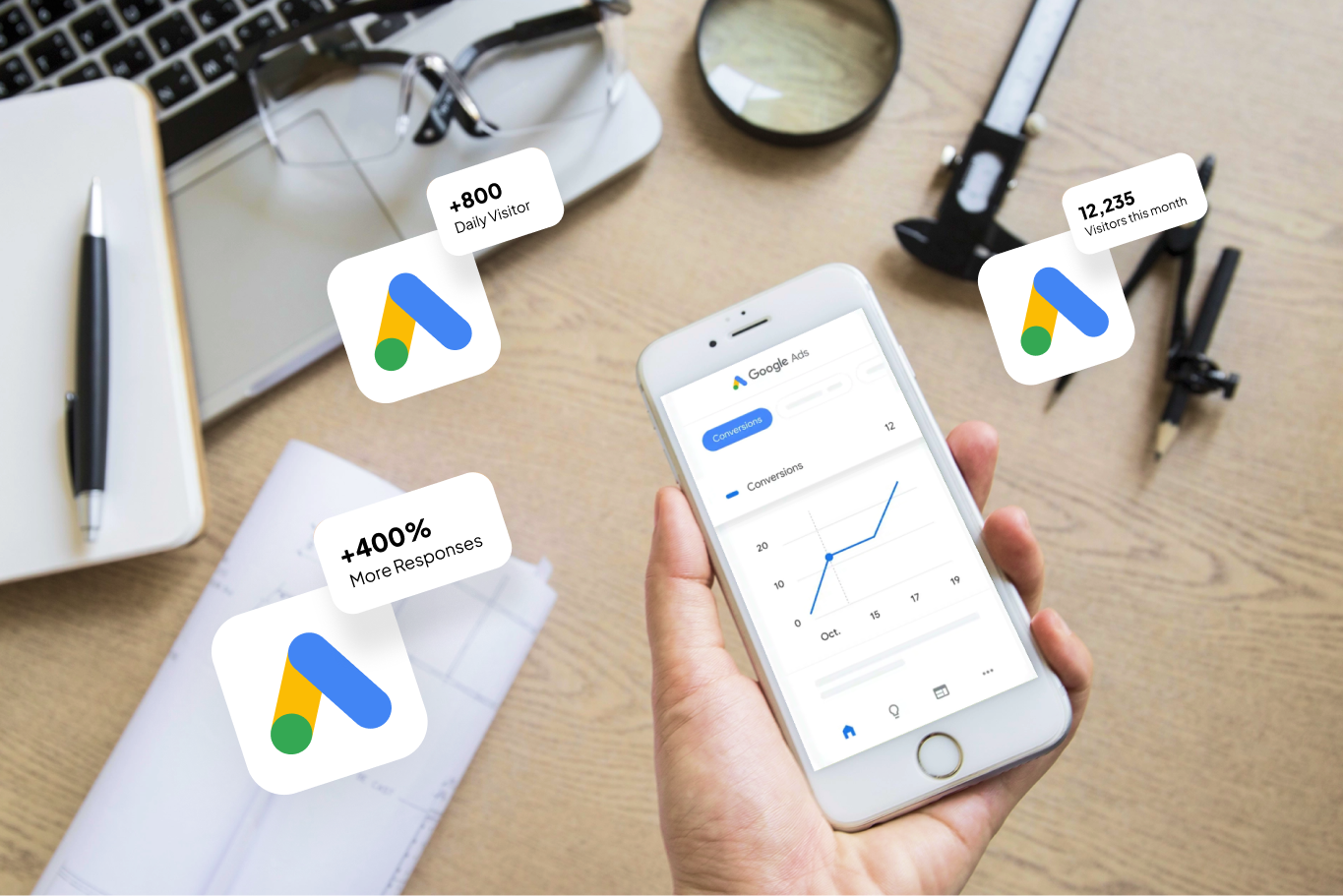10 Google Ads Hacks Every B2B Marketer Should Know in 2025
Google Ads has become the lifeblood of B2B marketing, but here’s the truth most marketers won’t admit: while nearly every B2B team runs Google Ads, only a handful actually make them work efficiently.
What’s the difference? It’s not always budget. It’s rarely keywords alone. It’s execution.
At Aimers, we’ve tested, broken, rebuilt, and optimized hundreds of B2B and SaaS campaigns — and through that experience, we’ve found ten Google Ads hacks that really move the needle. These are strategies that consistently cut cost-per-lead (CPL), improve lead quality, and squeeze more value from every click, especially across those long, winding B2B sales cycles.
Ready to sharpen your Google Ads game? Let’s jump in.
1. Set Goals Per Campaign — Not Account-Wide
Here’s a secret: setting global conversion goals is like using the same bait for every kind of fish.
Why it matters: Google’s Smart Bidding doesn’t know what you really want if everything, from a whitepaper download to a booked demo is treated equally.
What to do: Align each campaign with its funnel role. Demos? Guides? Case studies? Create separate thank-you pages to track SQLs (Sales Qualified Leads) vs. MQLs (Marketing Qualified Leads).
Pro tip: Split SQL and MQL actions to get cleaner, more useful data.
2. Build Negative Keyword Lists Like a B2B Sniper
B2B budgets bleed when your ads show up for students, job seekers, or “free training” searches.
Why it matters: Wasted clicks = wasted spend.
What to do: Ruthlessly block keywords like “resume,” “entry-level,” “certification,” and “internship.” Review your Search Terms report weekly to catch new junk queries.
Pro tip: Auto-sync your negative lists across campaigns from Google Ads’ Shared Library for efficiency.
3. Use Custom Segments for Precision Targeting in Display
Display ads get a bad rap but the problem’s usually lazy targeting.
Why it matters: Spray-and-pray display targeting kills budgets.
What to do: Use Custom Segments based on job titles, industries, or even CRM traits. Mix this with account-based remarketing for serious lead quality upgrades.
Pro tip: Combine this with search-based intent signals to sharpen audience relevance.
4. Adjust Bids by Hour (Yes, Manually)
Even in B2B, clicks have a “golden hour.”
Why it matters: You’re wasting money if you run ads during your audience’s downtime.
What to do: Analyze performance by time-of-day and slash bids during dead hours.
Pro tip: Pair this with device adjustments desktop leads often outperform mobile for enterprise buyers.
5. Separate Brand vs. Competitor Campaigns
Lumping brand and competitor keywords into the same campaign is a silent killer.
Why it matters: Google gets confused when intent signals collide, driving CPCs up.
What to do: Create distinct campaigns for your branded terms and your competitors’ names. Write laser-specific ad copy for each.
Pro tip: Monitor impression share gaps and pounce when rivals back off.
6. Use YouTube for MOFU, Not TOFU
Sorry — awareness-stage YouTube campaigns almost never convert.
Why it matters: Cold audiences skip or ignore your video ads.
What to do: Retarget warm prospects (like site visitors) with mid-funnel content: quick demo snippets, client testimonials, how-to clips.
Pro tip: Keep videos under 45 seconds with a strong CTA.
7. Feed Clean First-Party Data into Smart Bidding
Your best data isn’t Google’s it’s yours.
Why it matters: Smart Bidding thrives on solid signals.
What to do: Import GA4 audiences or your CRM’s best segments (e.g., decision-makers, recent website visitors).
Pro tip: Create churn-suppression or win-back audiences for clever growth lifts.
8. Test Ad Variants by Funnel Stage
One ad message cannot rule them all.
Why it matters: Top-of-funnel (TOFU) prospects need curiosity-driven copy. Bottom-of-funnel (BOFU) leads need urgency.
What to do: Write Responsive Search Ads (RSAs) for each funnel stage. Compare tones, headlines, and CTAs.
Pro tip: Run A/B experiments not guesses to see what resonates.
9. Rethink Attribution — Google Ads Helps, Even If It Doesn’t “Win”
Not every Google click leads to an immediate form fill but they often influence the final deal.
Why it matters: Last-click attribution hides your real campaign impact.
What to do: Review Assisted Conversions and Time Lag reports in Google Ads.
Pro tip: Build a multi-touch model that credits every assist along the buyer journey.
10. Great Campaigns Aren’t Built on Hacks — But These Help
Listen no amount of hacks can save a bad offer or a weak funnel. But these strategies? They’ll give you the leverage to scale good campaigns into great ones.
Test a few at a time. Track results. Kill what flops and double down on what wins.
Want help doing this the right way? At Aimers, we’ve refined these techniques across dozens of B2B and SaaS clients to squeeze more results from every ad dollar. Whether you’re launching a new campaign or trying to revive an old one, we’ve got you covered. Learn more about how to make Google Ads truly work for your B2B strategy.
Conclusion
Most Google Ads accounts are noisy, chaotic, and expensive. Yours doesn’t have to be.
With smarter goal setting, tighter audience control, and a rethink of bidding and attribution, you can break through the clutter and finally make Google Ads work for you, not against you.
Stay curious. Test relentlessly. And if you need a hand? You know where to find Aimers.


Leave a Reply